Philip Georgievich Staros - American father of Soviet microelectronics
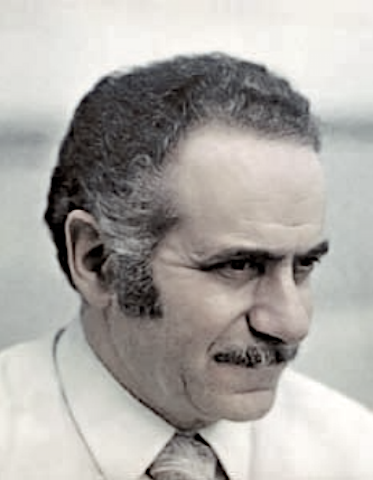
“I’m an American engineer,” he said, “I propose a work program that will allow the Soviet people to overtake America in the most important race of the twentieth century, exceeding both nuclear and space race in its significance — the first to create the fastest and most massive computers in the world the country's defense, for production management and just for ordinary people.
This loud statement belongs to the great physicist-mathematician, engineer, intelligence officer Philip Georgievich Staros (Alfred Epamenondas Sarant), who is the author of rich pages of history called domestic microelectronics. Closed laboratory SL-11, later design bureau of electronic technology - KB-2, Center for Microelectronics in Zelenograd, computer UM-1 (UM1-HX), UM-2, KIA "Uzel" for submarines, controlling the computer "Electronics K-200 "- everything is connected with the name of the USSR State Prize winner Philip Staros.
Alfred (Philip) was born on September 26, 1917 in Greece, his family Sarantopoulos immigrated to the USA, he spent his youthful years in the suburbs of New York. A short, stocky young man did not disdain the implementation of various works - he carried newspapers and washed windows. In 1941, Alfred graduated from the University of Cooper for the Advancement of Science and Art with a bachelor's degree in electrical engineering. Here he became a member of the Youth Communist League. In 1946 he made an attempt to occupy the ranks of graduate students at Massachusetts, Princeton universities, choosing the specialty "physics", but did not enroll in any of them. He went to work at the American electrical company Western Electric, but left there and worked as a junior engineer at Signal Corps Laborator for a couple of years, after which he returned to Western Electric. Later, while working at Bell Labs, Alfred held the position of engineer until September 1946. His chosen one, and later his wife, became Louise Ross, they began to build their American dream in the town of Ithaca, here their two children were born. But, they did not live together for long. Louise lost interest in her husband, and Saranta began a love relationship (which lasted more than 40 years) with Carol, a pretty blonde who at the time was the wife of Bruce's neighbor.

Soon, the fact that Alfred was in close contact with the couple Rosenberg surfaced, they were arrested in 1950 - later executed in an electric chair - for participating in nuclear espionage against the United States on the side of the USSR.

Alfred got to Rosenberg in 1944, he learned about the group from comrade Joseph Veniaminovich Berg (at that time Joel Barr, Joel Barr). The Soviet Union received 32 thousand pages of documentation from intelligence, personally from Berg and Staros - 9165 pages. Staros could not work further in his specialty, since his last name was on the blacklist as one of the members of the Communist Party. Engineer, in order not to leave his family hungry, began to engage in painting and repair. Soon he was invited for interrogation by the FBI, the decision was taken suddenly - to flee to Mexico. Neighbor Carol, leaving her husband and children, followed Staros. Mexico City, they reached after 2 months of movement. The road was blocked back, because of the fear of being arrested, Carol could not return to the children. Having contacted Soviet agents, they managed to escape through Guatemala on a freighter to Morocco, then to Spain, from where by plane to Poland. After six months the couple flew to Moscow. Soon they began life with a clean page: new documents, names and biographies. So there were Soviet citizens - Philip Georgievich and Anna Petrovna. At the same time, Berg arrived in Moscow. From here originates their tandem, the union of two extraordinarily gifted engineers, Americans, who managed to build a magnificent career in the USSR.

Josef Veniaminovich Berg (Joel Barr, Joel Barr)
Why did the Americans Alfred Saranta and Joel Barr voluntarily, without mercenary intentions, find themselves on the side of the USSR? Penetrated with ideology and faith in communism, the comrades were confident that a socialist revolution was in the United States. US military development would certainly help the USSR to fight a common enemy during the Second World War, but why did the Americans keep these designs under seven locks? .. This fact was not understandable to scientists. From the moral principles, the assistance of the USSR became their prerogative at number one. It should be mentioned that Staros and Berg were able to provide information about some of the American radar stations SCR 517, 520, SCR 720A, 720B, 721, 717A and 717B, 721, these models were of particular interest, because their dimensions indicated the beginning of the era of miniaturization of onboard radio electronics.
In the autumn of 1950, scientists were in the capital of the Czech Republic - Prague. They were assigned to work at the Military Technical Institute, here Alfred and Joe worked on the development of fire control systems (SLA, CMS). 6 years of life devoted to the Czech military industry.
The birth of microelectronics
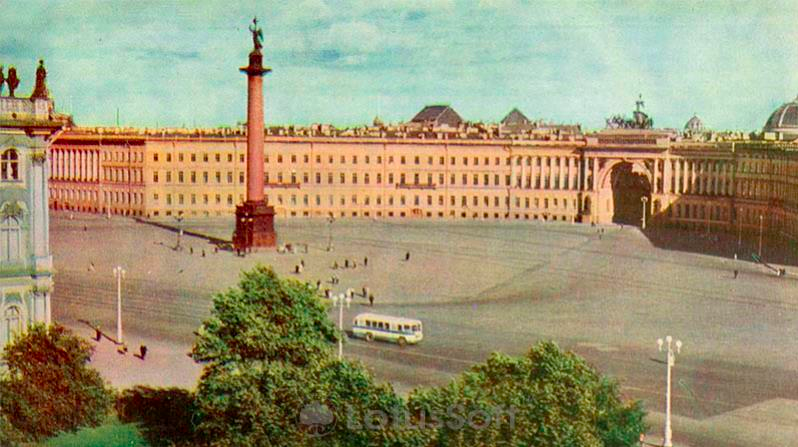
The period from 1956 to 1973 is rightly considered fruitful in the lives of two amazing mindsets of people. In 1956, the comrades returned to Leningrad and became the head of a special laboratory, in which they began to work on the development and implementation of microelectronic technologies.
... for several months, there were rumors around the city that there was some kind of special laboratory where they were engaged in a completely new direction of work, but it is impossible to know which way (it is still possible to endure, although it is curious!). That some Czechs are leading this laboratory (so what?), And they speak Russian very badly, with some kind of non-Czech accent (well, you will think!), They only hire them after an interview with them personally (and this you can tolerate it, but they take people regardless of their nationality (it cannot be!) and they even have the right to let any young specialist out into the street if he is a fool, a bum, or a scoundrel, or everyone.
Laboratory SL-11
At first, the laboratory of the SL-11 consisted of no more than 30 workers, later, by 1961, an independent design office of electronic equipment, KB-2, was created on the basis of a special laboratory: Philip G. Staros was appointed head, and Iozef Veniaminovich Berg was appointed deputy head and chief engineer.

Work and great minds were in full swing, the atmosphere was friendly and humorous. The laboratory team was divided into several small groups, each group was responsible for a specific machine device, there was a group that was responsible for the machine itself. Later, there was a need for the formation of microcollections of chemists and physicists-technologists, who worked tirelessly for the benefit of future discoveries in the field of microelectronics. As a result, the world saw the experimental samples of hybrid film chips. In SL-11, they also engaged in solid-state technologies, invented and set up production of packageless transistors for use in various models of hybrid microcircuits, which in the future influenced the development process of the first on-board miniature computers and the Knot Bios.
The first integral ferrite memory cubes "came out from under the pen" by a special laboratory under the guidance of M. Gurevich and Y. Shenderovich.
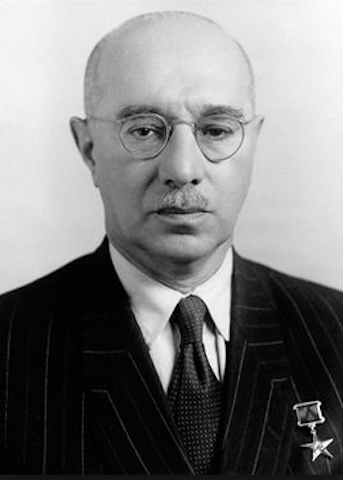
M. Gurevich
In 1959, from the building on Volkovskaya, the laboratory moved to the Palace of Soviets, which belonged to the Research Institute of Radio Electronics - NIRE. The NIRE-SKB divisions are design bureaus of Leningrad factories; radars for passenger and combat aircraft were developed here.
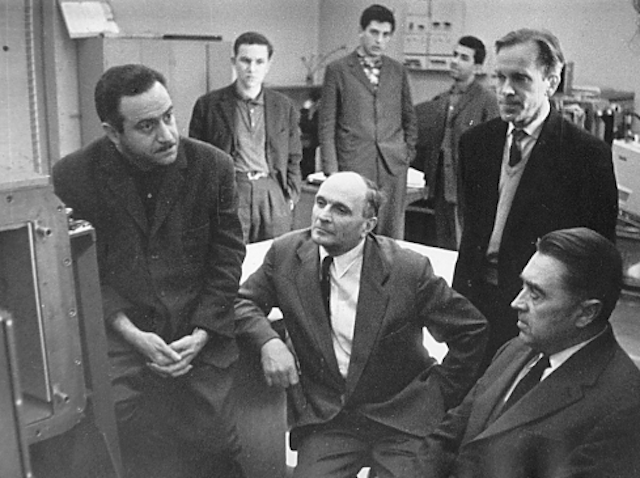
After the move, now the design office of KB-2 with the characteristic time enthusiastically worked on the creation of the national economic version of the closed car UM-1 - UM1-NC. Its development took a record short period of time - two years. In 1962, the car was ready, adopted by the State Commission and approved for mass production. It was a bright streak in the life of Staros, he lived with his family in a comfortable apartment, the salary was 800 rubles per month. Ahead the bright future, full of scale expectations and grandiose plans waited.
UM1-HX

A prototype of a computer for the national economy UM1-NX is demonstrated to Khrushchev
Philip Staros - the chief designer of the managing complex for the national economy of the UM1-NK, Berg, Valkov, Pankin, Borodin took part in the development of the machine. Such a complex was designed for industrial process control and management systems.
UM1-HX consisted of:
- control machine 880 x 535 x 330mm,
- 200 W power supply,
- external input / output device (OCR). ODR, in turn, consisted of 10 input-output units. The CCO enclosures were placed in cabinets 1200 x 650 x 1660 mm, in one such cabinet - two USO cabinets, three power supplies, and a water-cooled forced ventilation system
- telegraph apparatus STA-2M
- electric printing machine EUM-23;

COMPUTER UM1-NC
The UM1-HX computer is a machine with element base, which is based on semiconductor devices, used a binary number system, with variable addressability and speed of 5 thousand additions per second. The storage capacity is 256 words. UVM performed operations on fixed-point numbers, represented in the form of 15 binary digits (14 + 1 digit bits). UM1-HX served in industrial conditions, therefore, it was distinguished by high reliability and a failure-free operation time of 250 hours.

UM-1NH
The main unit of the UM-1NH computer was placed on a separate table and demonstrated to the First Person of the Fatherland, N. S. Khrushchev, during his visit to KB-2 (1962). Such a “table-top” UM-1NH compared to that time with tube devices impressed the First Secretary of the Central Committee of the CPSU. In December of the same 1962, a couple of months after Khrushchev visited the design bureau of the KB-2, Staros filed an application to join the Communist Party of the USSR. Nikita Sergeevich invited Philip to his office at the Central Committee and, bypassing the Leningrad Regional Committee of the party and the procedure for passing the candidate's internship, “dedicated” it to the party members.
In 1969, Staros was awarded the State Prize "For the development of a compact electronic control machine and control computer systems of the UM1-NC type and their introduction into the first digital control systems in various sectors of the national economy."

UM-1
We can confidently say that the UM-1 served as a model for the future family of onboard computers UM-2. The control computer UM-1 has demonstrated the possibility of creating a modern on-board machine for working in extreme conditions.
The biggest impression was made by its small dimensions and desktop execution, as well as the completely unfamiliar then elements of the machine, especially the cube of memory on multihole ferrite plates and the small-sized angle-to-binary converter.

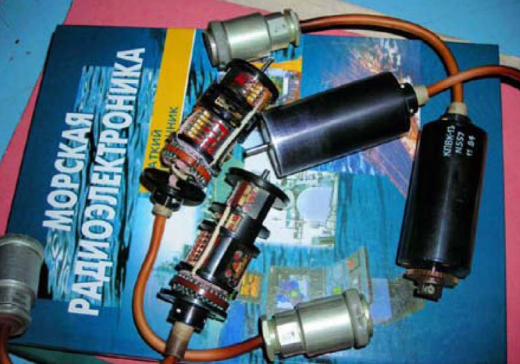
Compact rotation angle to binary code converter
In parallel, in KB-2, conducting research in the field of microelectronic technology, experimental samples of microminiature logic nodes and computer memory nodes were developed.
In 1964, under the leadership of Staros, the UM-2 computer was developed; this microminiature machine was planned to be used at aerospace objects at that time. The decision of the Central Committee of the CPSU and the Council of Ministers of the USSR from 1962 stipulated the creation of two generations of onboard machines UM-2 and UM-3.
For the organizations Tupolev and Korolev, prototypes UM-2 were developed: UM-2T and UM-2C.
The machine UM-2T in terms of reliability did not look the best way, it did not make all the changes that appeared in the process of testing the base model. However, it was quite suitable for bench testing of tasks and with our constant support.
It was planned that the UM-2C will be used to control the descent of the spacecraft from orbit.
In parallel, the development of the machine UM-2M (1965), which was an improved analogue of the UM-2. Under Korolyov, in KB-2 Staros, work began on a computer system project for the Soyuz spacecraft using UM-2. But, alas, Korolev died during the operation and the project remained just a project.
UM-2 with the element base consisting of logical modules and integral ferrite memory cubes, with its developed architecture, applied original schematic-design and technological solutions, has contributed a lot to the development of domestic on-board computing.
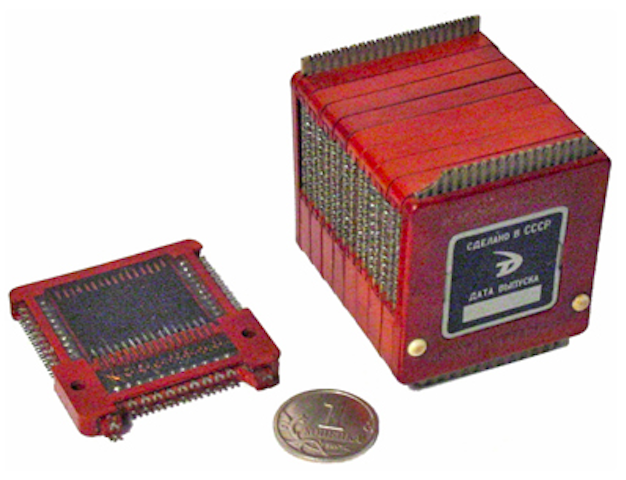
Memory cube
In 1964, in KB-2, a family of stackable integral KUB-type accumulators was created, which were equipped not only with control complexes based on UM1-HX, but also missile control systems. LEMZ - became the first plant in the world, which produced integral ferrite memory cubes.

Philip Staros became the chief designer of the combat information and control system "Knot" - built on the basis of the UM-2 - for diesel-electric submarines.
BIUS "Knot"
Combat Information Management System. The integrated computing system of a ship, surface or underwater, which comprehensively solves a wide range of tasks in managing the combat activity of a ship and all types of its weapons.
"Knot" - the first military system on microelectronic components, which was adopted and put into mass production. Heavy combat control systems were replaced by a couple of racks, BIUS worked much faster and more productive.
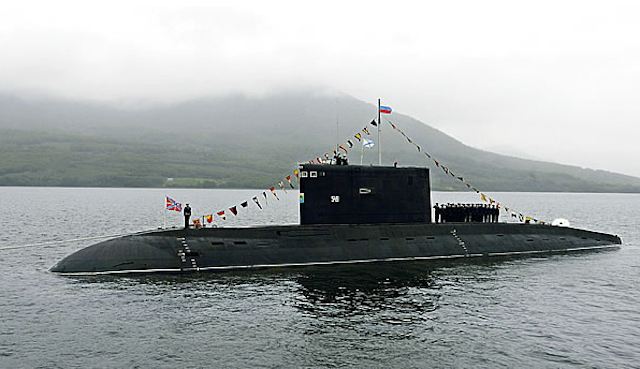
Diesel diesel-electric submarines of projects 877 and 636, equipped with a Knot control system
B-103 of the project 641 was the first diesel-electric boat on which they conducted the test of the Uzel. After that, by a special order of the Commander-in-Chief of the Navy, the B-103 began to carry the name of an experimental combat ship, which served to test and test the new technology for the fleet.

Logic modules BIUS "Knot"
From 1972 to 1994, 75 “Knot” systems saw the light, 65 of them were installed on the submarine, the rest were transferred to naval schools, training centers for submarine crews not only in Russia, but also in Algeria, India, Iran, China, Poland .
Later the control computer “Electronics K-200” and the control complex “Electronics K-201” were created. Speed "Electronics K-200" was 40 thousand operations per second and weighed such a machine is not much not a little - 120 kg with dimensions of 58 x 70 x 66 cm, for the entire production time 150 complexes (300 machines) were produced.

"Electronics K-200"
It was a 23 (22 + 1 sign) bit machine with variable addressing, parallel arithmetic, the main type of the logic element is hybrid chips with resistor-transistor logic. Logic machine had one hundred percent element-by-element duplication. The input language of the control computer was the problem-oriented language FORTRAN-L.
"Electronics K-200" worked in real time, distinguished by high reliability. Power consumption does not exceed 200 watts.
More details about the "Electronics K-200"
Zelenograd - Center of Microelectronics
Staros, a man of visionary and ideological, managed to put into his ears Khrushchev the need to create a new scientific and industrial Center of microelectronics, which could become Silicon Valley. Three months later, construction began on the satellite city of Moscow. Already on January 15, 1963 a new mark appeared on the map - the city of Zelenograd.
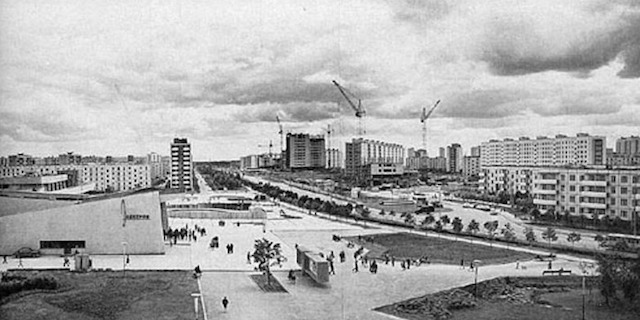
Construction of Zelenograd
Staros was appointed Acting Deputy General Director of the Center for Microelectronics (Science Center for Science), while remaining the chief designer of KB-2 (still an independent enterprise). Initially, Philip Georgievich was convinced that it was he who would be put at the helm of the Center for Microelectronics. But the top ordered otherwise.
Soon A.I. Shokin signed an order appointing Lukin to the post of the Director of the Center with the status of Deputy Shokin, and Staros was appointed his deputy for the scientific and technical part, retaining the post of the head of KB-2 in Leningrad. It became clear that his hopes of becoming the full leader of this project had completely failed.
Professionals from all over the fatherland took them to work at the Center, provided them with housing. Staros actively participated in the development of the Center for Microelectronics, shared his ideas, and trained specialists in his Leningrad area. Staros was the first in the USSR to succeed in obtaining positive results in the development of thick-film technology; he shared his ideas with the NC, thanks to which in 1964 the first microelectronic products appeared. Here we can single out the first serial product made using thin-film technology, the “Micro” radio receiver. In 1964, the Micro made a lot of noise on the foreign market, Khrushchev brought it to the convention of radio engineers (USA), after which the press choked with dazzling headlines: did the USSR manage to overtake the USA? For all the time it was released 80 thousand copies of the receiver.

Radio "Micro"
Since 1964, microchip development has been carried out at the Microelectronics Center: thick-film GIS “Path” (the first ICs that have flown around the Moon), thin-film GIS “Ambassador” and semiconductor IC “Irtysh” (see photo below). By 1975, 1020 types of IP were developed in Zelenograd.

Science Center played a leading role in the development of domestic microelectronics. At the beginning of the 70s, it consisted of 9 research organizations, consisted of 5 pilot plants, about 13 thousand people worked at the institutes, 16 thousand at the pilot plants.
After the resignation of Khrushchev in 1964, Staros lost in his person support from the state. In December, the Board met on the agenda was one issue relating to the work of CB-2. The appointed commission arrived with a check, as a result of which they “discovered” five unsuccessful UM-2 machines that were unwritten on time and are still on the balance sheet (although they were used to practice new ideas). A party and economic asset was held, on which Staros was accused of “damage”. He was broken, after these events he was hospitalized for half a year. He was removed from the post of Deputy General Director of the Scientific Center, and this was the end of Philip Staros’s participation in the development of the NC in Zelenograd.

In 1973, KB-2 ceased to exist as a separate enterprise and became part of the union "Svetlana". Soon Staros with his wife Anna (Carol) went to the Far East, here he headed the laboratory of technical means for artificial intelligence systems. His dream to create a large-scale Scientific Center in the Far East remained a dream. There was no huge money, no team, no support from the government.
On March 12, 1979, Filipp Georgievich Staros died of a heart attack, before reaching the hospital.
Initially, his urn with ashes was buried in Vladivostok, a monument in the form of a cube was erected on his grave. After moving the family to Leningrad - reburied at the Bolsheokhtinsky cemetery.

Anna Petrovna in 1989 applied to the American Embassy with a request to restore her documents to Carol Dayton, since this issue was quickly resolved, since she had her American driver's license. Already in 1991, the plane with Anna-Carol on board landed in California. In 1992, she met her ex-husband, stayed with him in a guest house, looking after his second wife, Alzheimer's, who was sick. Bruce and Carol made the decision to live together, gathering all their children in their home.
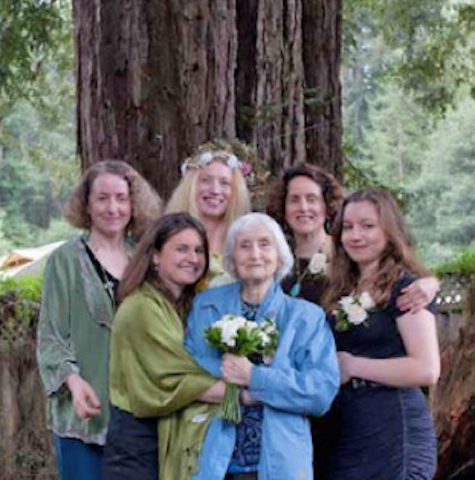
A man with a fantastic destiny, books about him, about his developments, books were written, more than one program was filmed. Fleeing to the USSR, his biography was rewritten, he is an American, who managed to become not only a respected Soviet citizen, but also occupy an honorable place in the history of computing technology of the Great Fatherland. Due to the circumstances, Philip Georgievich Staros did not succeed in realizing the ambitious and bold dream of creating something similar to Silicon Valley in the USSR, but he set the correct and confident direction vector for the creation and development of Soviet microelectronics.
In preparing the article, materials from the following sources were used:
computer-museum.ru
Mark Halperin "Whale Jump"
As advertising. Stock! Only now get up to 4 months of free use of VPS (KVM) with dedicated drives in the Netherlands and the USA (configurations from VPS (KVM) - E5-2650v4 (6 Cores) / 10GB DDR4 / 240GB SSD or 4TB HDD / 1Gbps 10TB - $ 29 / month and above, options with RAID1 and RAID10 are available) , a full-fledged analogue of dedicated servers, when ordering for a period of 1-12 months, the conditions of the promotion are here, existing subscribers can receive a 2-month bonus!
How to build the infrastructure of the building. class c using servers Dell R730xd E5-2650 v4 worth 9000 euros for a penny?
All Articles